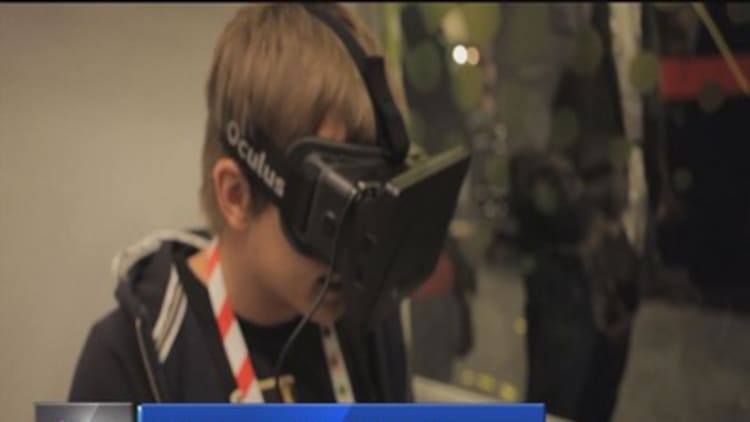
With Facebook's Oculus, Sony's Morpheus and HTC's Vive headsets getting ready to launch this year, expectations are high for virtual reality to shake up video games.
But that's not all; virtual and augmented reality technology is expected to disrupt a range of industries.
"There's architecture, there's automotive," said Oculus CEO Brendan Iribe to CNBC. "I think you're going to see the [Oculus] Rift throughout a lot of automotive showcases. Different destinations are going to start featuring this, so yeah, there's a huge range of applications."
At the recent CES event, a wide range of potential VR applications were unveiled.
There are concerns that the high cost of the most sophisticated headsets will slow the technology's consumer adoption. (An Oculus Rift, along with a computer with adequate power, could cost around $1,500.) But the cost of providing headsets and shooting new VR content is manageable for different types of corporations.
This week, as we call for nominations for the 2016 CNBC Disruptor 50 list, we're looking at the high-tech trends that will drive disruption across industries.
Here are a few examples from the world of virtual and augmented reality.
Entertainment
Many of the media conglomerates are investing in VR start-ups as movie studios begin to explore ways to bring their stories into the next dimension. And Fox is leading the charge with VR content, having launched the "Martian Experience" at CES, a 22-minute-long immersive entertainment experience, offered with the Oculus headset and hand controls, unlikely anything else in the market.
It's not designed to be a promotion for the film, but a stand-along experience that consumers would pay for (pricing to be determined by the studio as it gets a better sense of the market). One can imagine a day when consumers walk out of a movie theater and have the option of trying one of several VR experiences for another $15 or $20.
Advertising
Big brands are already creating separate budgets for VR, experimenting with the technology as a way to allow consumers to get to know their products in a way they have never been able to before. North Face has already created branded content for the Oculus Rift — imagine mountain climbing in North Face gear. And travel and tourism companies, from Marriott to Carnival Cruises, are investing in creating immersive experiences to showcase far-flung destinations to try to convince travelers to book a trip. And e-commerce companies are using the technology to showcase furniture and design layouts, making showrooms a thing of the past.
Medical
The potential for VR to change medicine are myriad. For doctors, headsets are already being used to train surgeons and provide practice interacting with patients. For patients, there are VR treatments for everything from PTSD to curing phantom pains in amputee victims.




